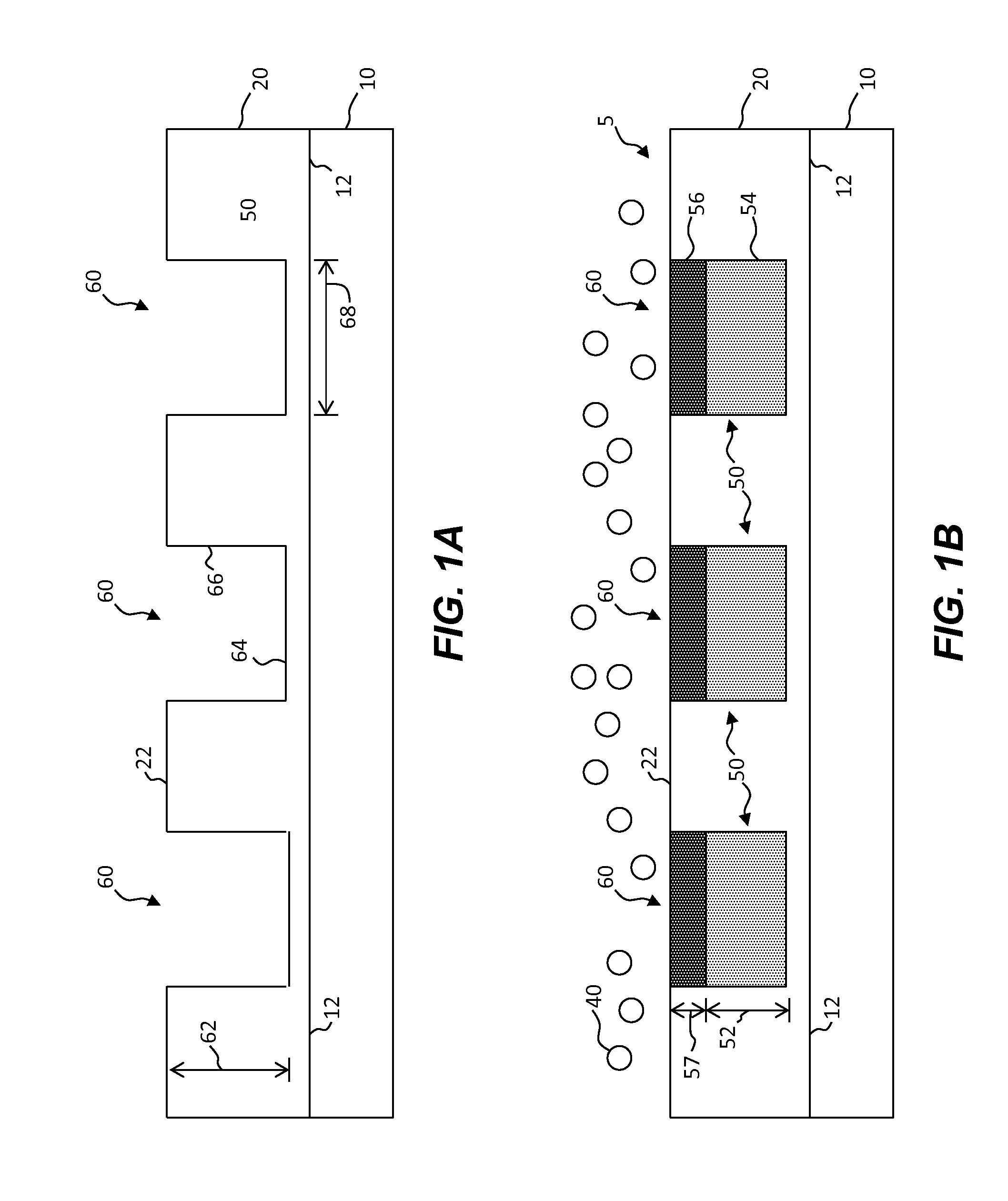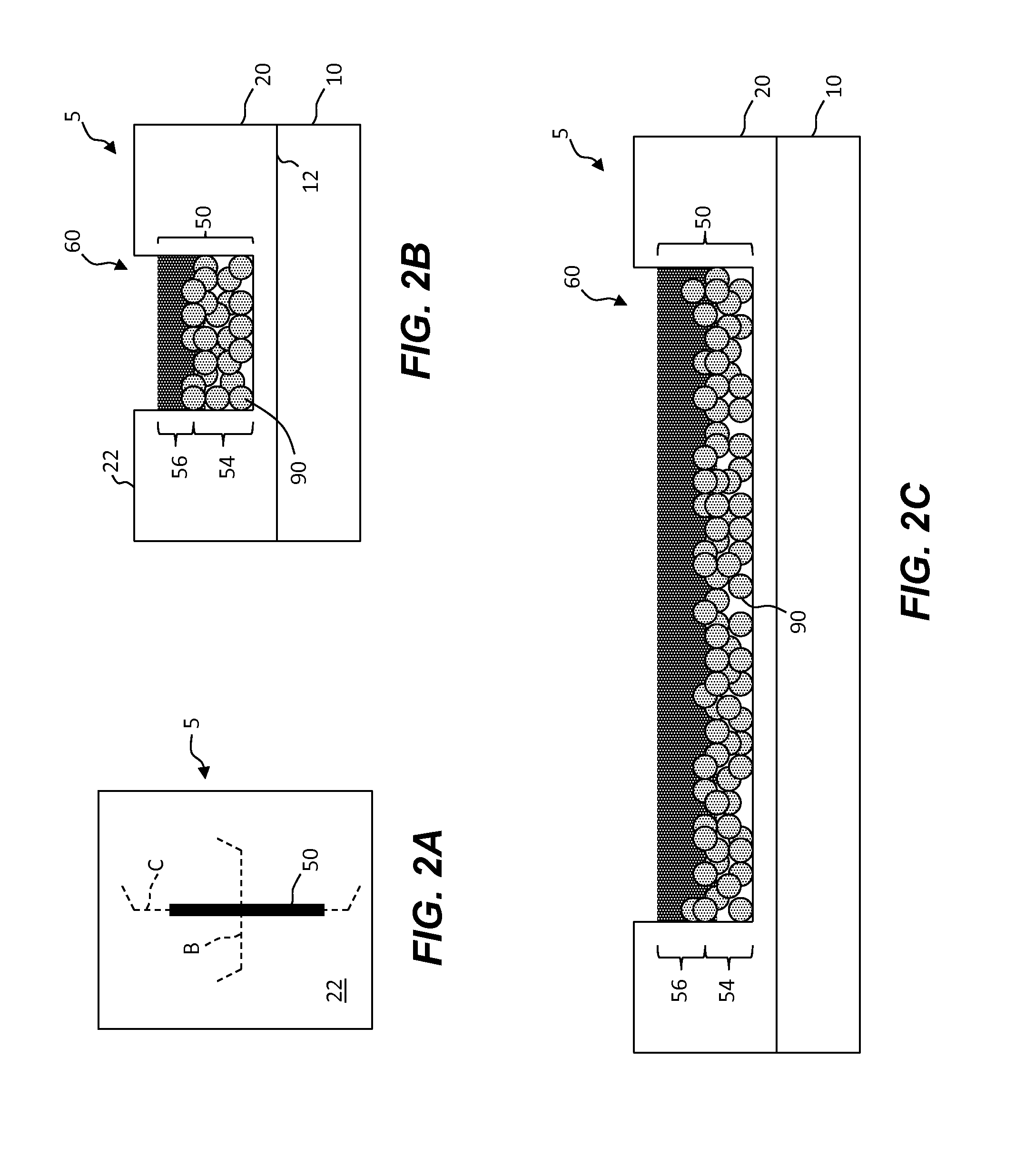Imprinted thin-film electronic sensor structure
a technology of electronic sensors and thin films, applied in the direction of dielectric characteristics, light absorption dielectrics, instruments, etc., can solve the problems of high cost of conventional integrated circuit techniques, high cost of photolithographic processes, and time-consuming laser ablation techniques, etc., to facilitate electrochemical detection, more sensitive electronic sensors, and greater electrode spatial resolution
- Summary
- Abstract
- Description
- Claims
- Application Information
AI Technical Summary
Benefits of technology
Problems solved by technology
Method used
Image
Examples
Embodiment Construction
[0030]The present invention provides an imprinted electronic sensor structure on a substrate for sensing an environmental factor. The imprinted electronic sensor structure includes a thin-film multi-layer micro-wire structure on a substrate that senses an environmental factor. In an embodiment, the thin-film multi-layer micro-wire structure is miniaturized with improved sensitivity, selectivity, and response time at reduced manufacturing costs.
[0031]Referring to FIGS. 1A and 1B, an imprinted electronic sensor structure 5 for sensing an environmental factor according to an embodiment of the present invention includes a substrate 10. A cured layer 20 has a layer surface 22 located on a substrate surface 12 of the substrate 10. A plurality of spatially separated micro-channels 60 extend from the layer surface 22 into the cured layer 20. Referring specifically to FIG. 1A, the micro-channels 60 are illustrated together with a micro-channel bottom 64, a micro-channel side 66, and a micro-...
PUM
| Property | Measurement | Unit |
|---|---|---|
| depth | aaaaa | aaaaa |
| feature size | aaaaa | aaaaa |
| feature size | aaaaa | aaaaa |
Abstract
Description
Claims
Application Information
 Login to View More
Login to View More - R&D
- Intellectual Property
- Life Sciences
- Materials
- Tech Scout
- Unparalleled Data Quality
- Higher Quality Content
- 60% Fewer Hallucinations
Browse by: Latest US Patents, China's latest patents, Technical Efficacy Thesaurus, Application Domain, Technology Topic, Popular Technical Reports.
© 2025 PatSnap. All rights reserved.Legal|Privacy policy|Modern Slavery Act Transparency Statement|Sitemap|About US| Contact US: help@patsnap.com



